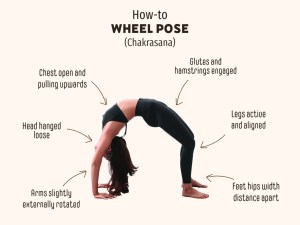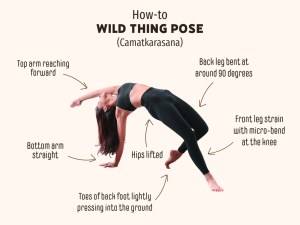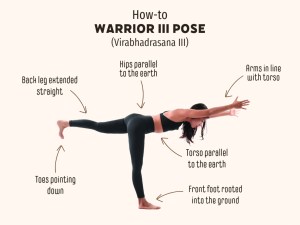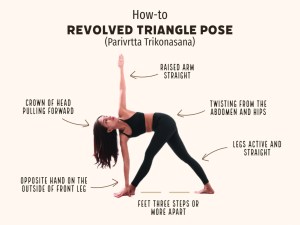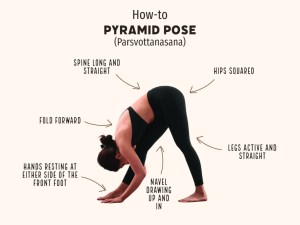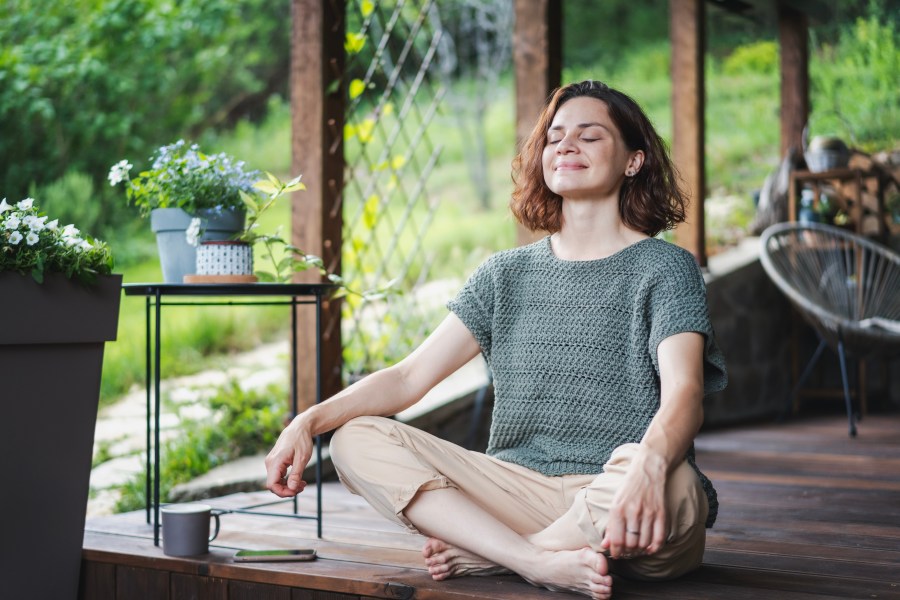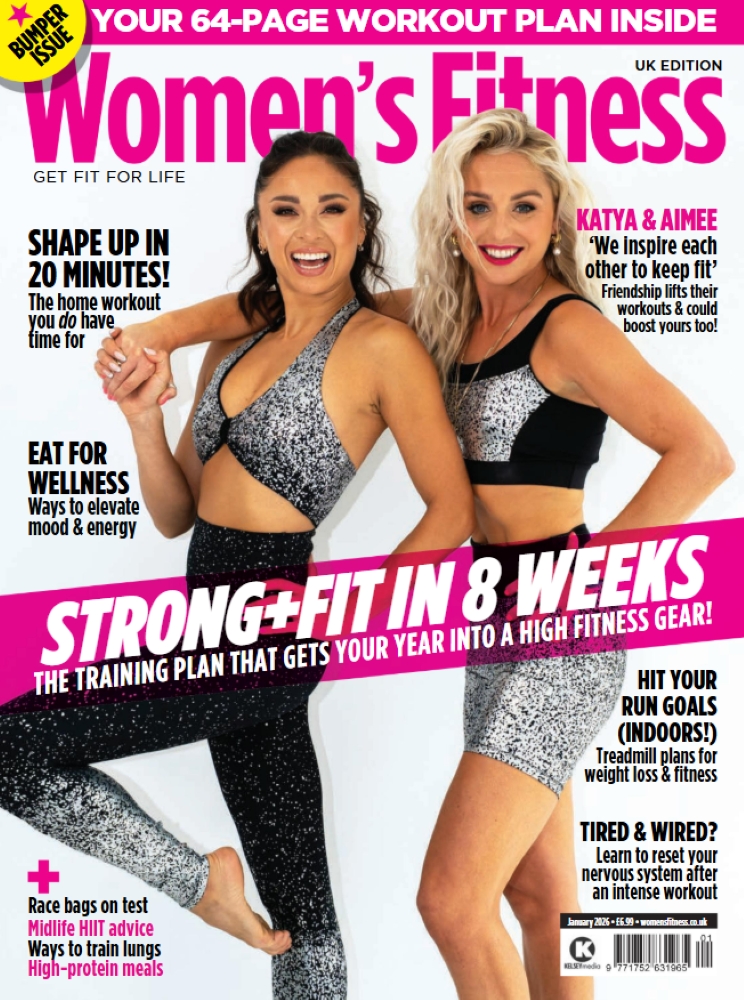Looking to take your yoga to the next level? International yoga expert Mark Stephens shares his advice on respecting the teacher within.

Mark Stephens shares yoga to enhance health, clarity and joy.
The initial allure of yoga often lies in its promise of increased flexibility, strength and a way to relax and reduce stress. These are very real benefits of a consistent yoga practice. However, its greater potential goes far deeper, encompassing the whole of who we are as human beings – how we feel, think and live our lives. Yoga’s postural and breathing practices can serve as a mirror, allowing us to feel and see deeply into ourselves. Through these practices of self-discovery and self-appreciation, we experience what we gravitate toward or resist, what brings us joy or pain, and what makes us calm and clear or agitated and confused. A key part of practising for such insights is slowing down, being with the breath and cultivating a deep curiosity about how we are who we are. When we do this with persistence and non-attachment, we gradually become steadier in our emotions, clearer in our thoughts and altogether more balanced, strong and open in our lives.
While there’s great value in learning from an insightful yoga teacher, the best teacher we will ever have lives within each of us – our inner teacher. Ideally, we tune in to that teacher even while listening to and considering everything an outer teacher suggests. To take our practice to a deeper and more personal level, we eventually practise on our own, guided from within, tapping into all the tools and techniques we’ve learned in classes. In what we call a home practice – which can take place anywhere – it’s all about how you are within yourself, free from the distractions or pressures that often arise in social settings.
When you get on your mat, start by making a commitment to yourself. Ask yourself why you’re there. Take a moment to simply sit, consciously breathe and tune in to what’s really happening in your life at that moment. You might notice what you’re feeling in your body, what your body is saying or suggesting about what you might best explore in your practice. Reflect on this and set an intention – a clear inner purpose – for your practice. You might envision breathing that intention into your heart. Then, start to move with the breath and that intention.
As you begin to move with the breath, make the breath the heart of your practice, letting it guide the creation of all forms and transitions. Start with simple movements that gradually warm and awaken your entire body. You might begin with twists, side stretches, wrist and shoulder stretches – or come to all-fours to explore cat-cows, puppy dog or extended child’s pose, playing with them in ways that feel inviting to your body. Sun salutations can bring greater dynamism, warming the entire body, which is helpful for everything that follows. If your conditions and intentions suggest a more restorative practice, you might opt to release onto your back to explore simple movements to gently open and awaken your body.
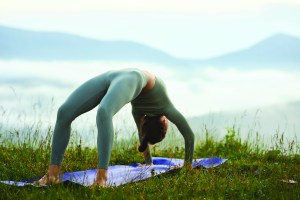
Reaching for the peak
You might choose to focus on a certain pose or area of your body that feels like it’s inviting greater attention or that you’re just interested in exploring. To delve more deeply into that area, what we might call a ‘peak pose’, it’s ideal to break it down into its constituent elements, giving each element its due attention with more focused or targeted warming – moving from simple to complex.
For example, if you intend to do backbends such as bridge or wheel, it’s helpful to have first warmed up and stretched your entire body. Standing poses are one of the best ways to achieve this general warming. You can also choose standing poses that target the areas of your body most relevant to backbends, especially stretching the hip flexors to allow for easier hip extension, a basic element of both bridge and wheel.
Bridge involves shoulder extension, so standing poses in which you interlace your fingers behind your back to stretch the fronts of your shoulders is beneficial. Wheel involves the opposite shoulder movement – flexion – which becomes easier if you first stretch the muscles between your shoulder blades (the arm form of eagle pose is optimal) and along the sides of your shoulders (lats and triceps, which cow face arms target). Add downward dog, and your shoulders will be much happier when approaching wheel. For both bridge and wheel, greater suppleness through your torso and along your spinal column is incredibly helpful, so be sure to weave in twists as you prepare for these backbends.
Following these general principles, you can refine your personal class-design skills by asking yourself some basic questions about any given pose. First, what needs to be open and stable? Then, ask which simpler poses would give you those opening and stabilising qualities. This starts to give you a set of poses to place in your personal sequence. As you reach the peak pose(s), give yourself time to explore for a few minutes, perhaps using slightly different techniques, props or other ways to experience it in the best manner for you at that moment.
Finding balance
It’s important to recognise that every pose creates tension, and a well-balanced and integrated practice resolves the cumulative tension of the overall practice. Counterposes are key here – doing poses that counteract the tension created by other poses. For example, doing bridge or wheel can create tension along the spine. Simple twists after backbends are optimal for resolving that tension.
The ultimate integration happens in savasana. Be patient in setting up for it so that you are as comfortable as possible. You might enjoy doing savasana with your legs up a wall, a deeply relaxing variation. Play with different forms of savasana to find what most supports you in letting go – of everything, including the breath – just letting everything be.
Get kitted out
BAM Mallea High-Rise leggings and Cross Back Vest
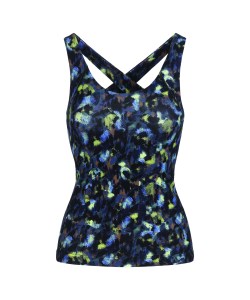
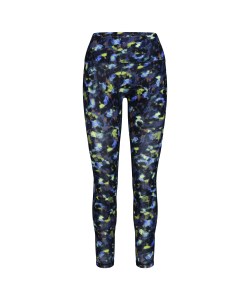
£55 and £39, bambooclothing.co.uk
We love the look of these juniper print leggings. Made with BAM’s ultimate yoga fabric, Mallea, which boasts a buttery soft feel and contains just 10 per cent elastane.
Liforme Tantalising Terracotta Yoga Mat
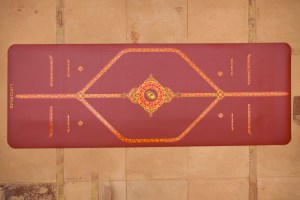
£140, liforme.com
Alignment guides are invaluable in helping you find balance on your mat. Liforme’s newest offering comes in earthy shades of dark red, orange and umber, and has a free carry case.
Yoga Sequencing by Mark Stephens
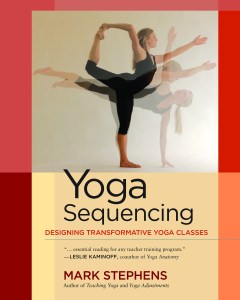
North Atlantic Books, £19.99
Delve more deeply into the art of sequencing, understand the arc structure of a yoga session and learn to design a sequence for
different abilities or themes, such as emotional wellbeing.
How to sequence a yoga session
Mark Stephens created this sample sequence especially for Women’s Fitness readers, using bridge or wheel as the peak pose. If you’re not familiar with some of the postures, follow our visual guides over the next few pages…
WARM-UP
1. Hero – 2-3 minutes. Set an intention.
2. Downward dog, bending alternate legs – 1 minute.
3. Classical sun salute – remix 2 times, exploring low lunge with dynamic movement for 5 breaths each time.
4. Sun salute A – remix 2 times, holding downward dog for 1 minute each time.
5. Sun salute B – remix 3 times, holding high lunge for 1 minute on the last time.
STANDING POSES
6. Revolved chair – 5-10 breaths on each side. Release to mountain pose. Transition to a wide-legged standing forward fold, then into…
7. Warrior II – 1 minute on each side.
8. Extended side angle – 1 minute on each side. Simple vinyasa (plank, down dog, up dog, down dog, plank).
9. Wild thing to high lunge to triangle to standing, repeat on other side.
10. Eagle – 1 minute on each side.
11. Wide-legged forward bend, hands clasped behind back and raised –
5-10 breaths.
12. Pyramid – 5 breaths. Transition to the next asana.
13. Revolved triangle – 5 breaths. Transition to the next asana.
14. Revolved half-moon – 5 breaths. Transition back to revolved triangle, then to Pyramid. Switch sides and then step to mountain pose.
15. Sun salute A. Flow to down dog.
16. High lunge – 1 minute. Transition
to the next asana.
17. Warrior III – hold 3 breaths, then transition to the next asana.
18. Revolved hand-to-foot pose – 10 breaths. Transition back to warrior III for 1 breath, then back to high lunge. Do a vinyasa and switch sides.
19. High lunge – 5 breaths. Revolved high lunge – 5 breaths. Do a vinyasa.
SEATED POSES
20. Hero – 1 minute.
21. Supine hero – 2 minutes with arms overhead in flexion. Transition through all-fours to downward dog. Lie supine (if possible, float through the arms).
22. Bridge – 1 minute. Then, either stay with bridge 3 or more times. If stable, explore raising alternate legs, holding each side for up to 5 breaths. Alternatively, set up for wheel.
23. Wheel (optional) – 5-10 breaths. Repeat 2-3 times. If stable, explore raising alternate legs, holding each side for up to 5 breaths.
24. Return to lying supine, knees to chest – 5 breaths.
25. Supine twist – 10 breaths each side.
26. Happy baby – 5 breaths.
27. Supine twist – 10 breaths each side with feet clasped
28. Staff pose – 3 breaths.
29. Seated forward fold – 2 minutes.
30. Sage twist (option to bind and fold forward) – hold each side for 2 minutes.
31. Legs up the wall – 5 minutes.
32. Savasana – 5-10 minutes.
33. Easy pose (or lotus) with skull-shining breath 1 minute.
